
The Enchanting Wilderness of Kunoy Island
Discover the untouched beauty and serene landscapes of Kunoy Island, a hidden gem in the Faroe Islands perfect for hiking, birdwatching, and immersing in local culture.
Kunoy Island, one of the northernmost gems in the Faroe Islands, is a captivating blend of rugged landscapes and serene beauty. The island, with its steep cliffs and dramatic peaks, offers some of the most stunning panoramic views in the archipelago. Kunoy means 'Woman Island', and it is known for its untouched wilderness and tranquil atmosphere. Visitors can explore the quaint village of Kunoy, where traditional Faroese houses dot the landscape, and experience the local culture and hospitality. The island's hiking trails are a major draw, leading adventurers through lush valleys and up to the summits of towering mountains such as Kunoyarnakkur and Kúvingafjall. These trails offer breathtaking vistas of the surrounding seascapes and neighboring islands. Birdwatchers will find Kunoy a paradise, with its rich avian life that thrives in the island's natural habitats. The island is also home to a variety of flora and fauna, making it a perfect spot for nature enthusiasts. Whether you are seeking solitude or adventure, Kunoy Island provides a unique and memorable experience in the heart of the Faroe Islands.
Local tips in Kunoy Island
- Pack sturdy hiking boots; the trails can be steep and rugged.
- Bring binoculars for birdwatching and enjoying distant views.
- Check the weather forecast before your visit; conditions can change rapidly.
- Visit the local village to experience traditional Faroese hospitality.
- Carry a map or GPS device; some trails are less marked.
The Enchanting Wilderness of Kunoy Island
Kunoy Island, one of the northernmost gems in the Faroe Islands, is a captivating blend of rugged landscapes and serene beauty. The island, with its steep cliffs and dramatic peaks, offers some of the most stunning panoramic views in the archipelago. Kunoy means 'Woman Island', and it is known for its untouched wilderness and tranquil atmosphere. Visitors can explore the quaint village of Kunoy, where traditional Faroese houses dot the landscape, and experience the local culture and hospitality. The island's hiking trails are a major draw, leading adventurers through lush valleys and up to the summits of towering mountains such as Kunoyarnakkur and Kúvingafjall. These trails offer breathtaking vistas of the surrounding seascapes and neighboring islands. Birdwatchers will find Kunoy a paradise, with its rich avian life that thrives in the island's natural habitats. The island is also home to a variety of flora and fauna, making it a perfect spot for nature enthusiasts. Whether you are seeking solitude or adventure, Kunoy Island provides a unique and memorable experience in the heart of the Faroe Islands.
When is the best time to go to Kunoy Island?
Iconic landmarks you can’t miss
Kirkjubømúrurin
Discover Kirkjubøur, a historical gem in the Faroe Islands, showcasing medieval architecture, stunning landscapes, and vibrant local culture.
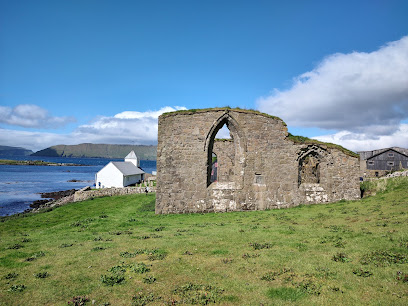
Múlafossur Waterfall
Discover the breathtaking beauty of Múlafossur Waterfall in Gasadalur, an iconic natural marvel of the Faroe Islands, perfect for nature lovers and photographers.
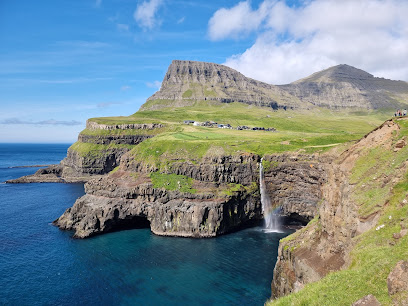
Gjógv Natural Harbour
Explore the stunning Gjógv Natural Harbour in the Faroe Islands, where dramatic cliffs meet vibrant village life amidst breathtaking coastal views.

Fossá
Discover the breathtaking beauty of Fossá, the highest waterfall in the Faroe Islands, where nature's majesty awaits every visitor.
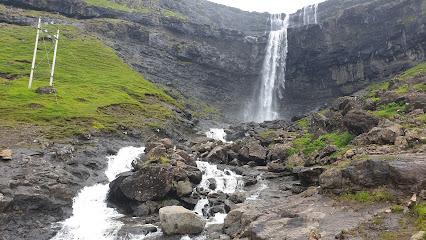
The Nordic House
Explore Faroese culture at The Nordic House, a vibrant center for art, music, and local cuisine in Tórshavn, Faroe Islands.
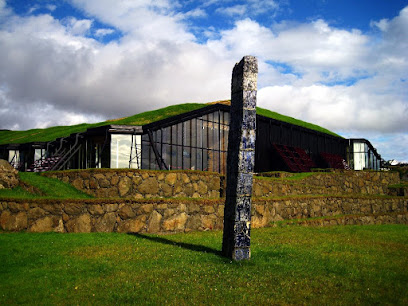
Skansin
Explore Skansin, Tórshavn - A historical landmark showcasing the rich maritime heritage of the Faroe Islands with stunning views and lush landscapes.
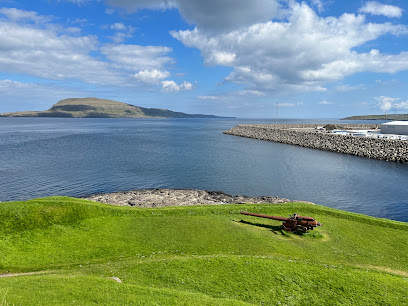
The Seal Woman (Kópakonan)
Discover the legend of Kópakonan at the breathtaking Seal Woman sculpture in Mikladalur, a cultural gem of the Faroe Islands.
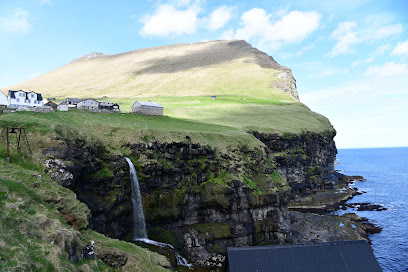
Trælanípa
Explore Trælanípa, a breathtaking cliff in the Faroe Islands, where stunning views and rich natural beauty await every traveler.

The National Gallery of The Faroe Islands
Discover the artistic heritage of the Faroe Islands at The National Gallery, where local culture and creativity come to life.
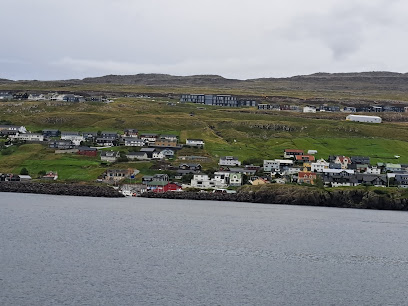
Tjóðsavnið (Faroe Islands National Museum)
Discover the cultural treasures and natural wonders of the Faroe Islands at Tjóðsavnið, the National Museum that showcases the islands' rich heritage.
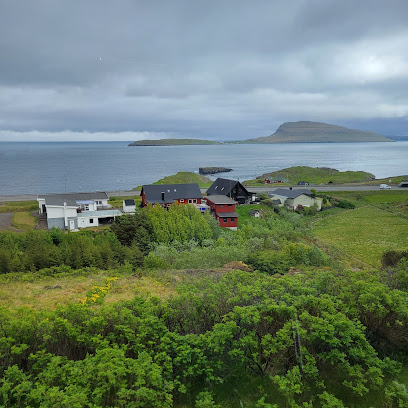
Kallur Lighthouse
Explore Kallur Lighthouse, an iconic landmark in the Faroe Islands, offering breathtaking views and an unforgettable hiking adventure.
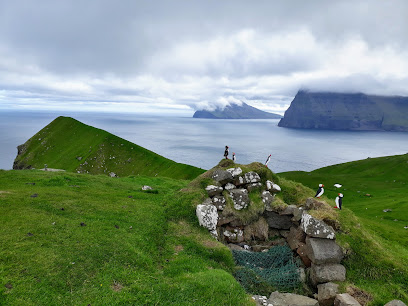
Slave Cliff (Lake Above the Ocean)
Discover the breathtaking Slave Cliff in the Faroe Islands, a stunning hiking area offering panoramic ocean views and unforgettable natural beauty.
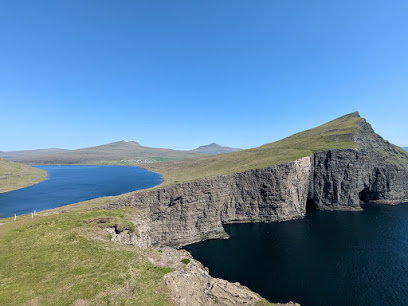
Giljanes Hostel & Campsite
Discover the breathtaking beauty of the Faroe Islands while staying at Giljanes Hostel & Campsite, your perfect nature retreat.

Klakkur
Discover the breathtaking beauty of Klakkur, a premier hiking destination in the Faroe Islands, where nature and adventure collide for an unforgettable experience.
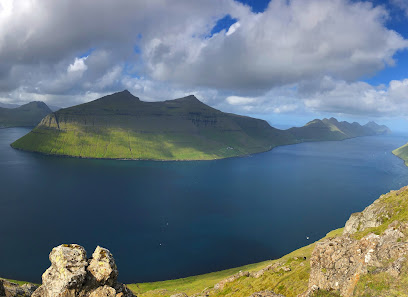
Christianskirkjan
Experience the unique architectural beauty and serene atmosphere of Christianskirkjan in Klaksvík, a must-visit Lutheran church in the Faroe Islands.
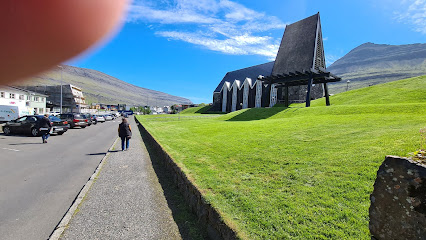
Essential places to dine
Fríða Kaffihús
Discover Faroese culture and cuisine at Fríða Kaffihús in Klaksvík - where every sip tells a story.
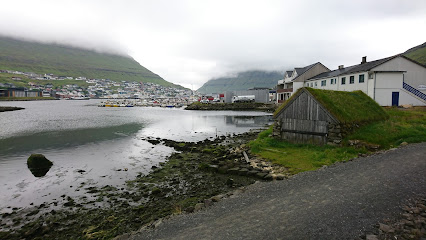
Angus Steakhouse
Experience premium Faroese cuisine at Angus Steakhouse - where every meal is crafted to perfection.
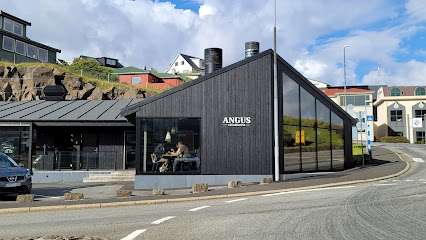
Koks Restaurant
Experience innovative Faroese cuisine at Koks Restaurant in Leynavatn, where breathtaking landscapes meet culinary artistry.
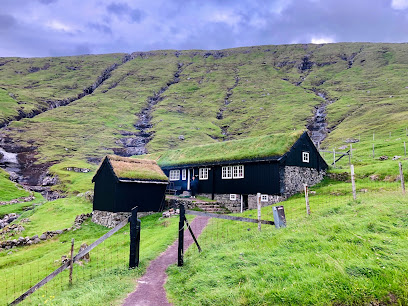
Rose's Restaurant & Catering
Experience authentic Faroese cuisine at Rose's Restaurant & Catering, where local flavors meet breathtaking views in Ljósá.
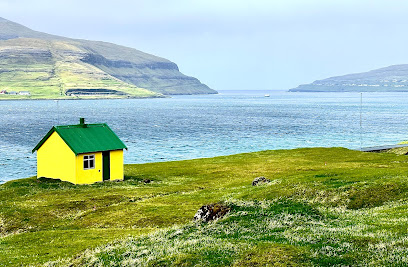
Angus Steakhouse Klaksvík
Experience exceptional Faroese cuisine at Angus Steakhouse Klaksvík—where every meal is a celebration of local flavors.
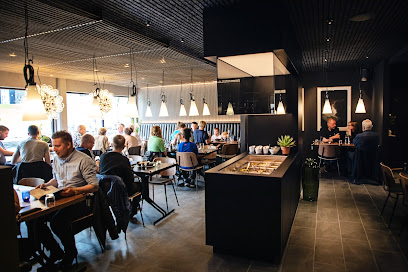
Fisk og Kips
Experience authentic Faroese flavors at Fisk og Kips – Tórshavn's beloved spot for fresh fish and crispy chips.
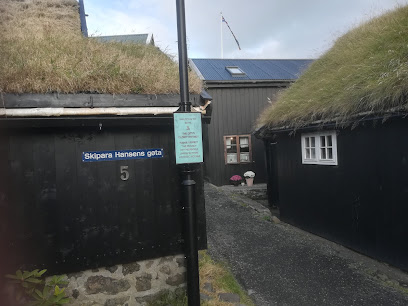
Kafe Umami
Discover Kafe Umami in Tórshavn: A delightful restaurant blending Faroese traditions with international flavors in a cozy atmosphere.
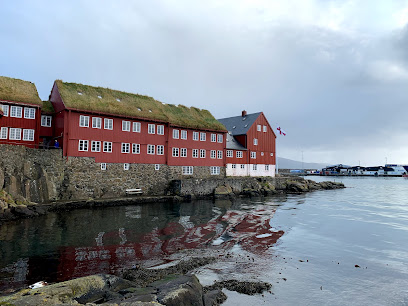
Muntra
Discover Muntra in Fuglafjørður: A restaurant offering authentic Faroese cuisine with stunning views and locally sourced ingredients.
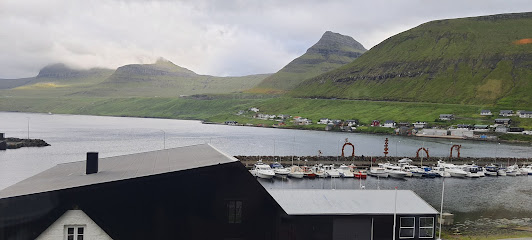
Skeiva pakkhús
Discover authentic Faroese cuisine at Skeiva Pakkhús in Tórshavn – a culinary gem offering fresh local dishes in a cozy atmosphere.
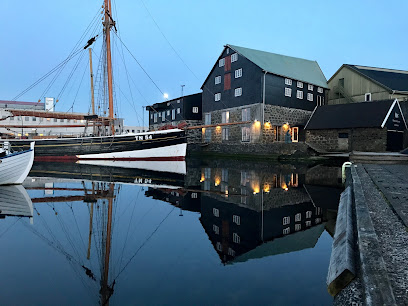
Joe Pizza
Experience authentic Italian cuisine in Hvalvík at Joe Pizza – where every bite tells a story of flavor and tradition.
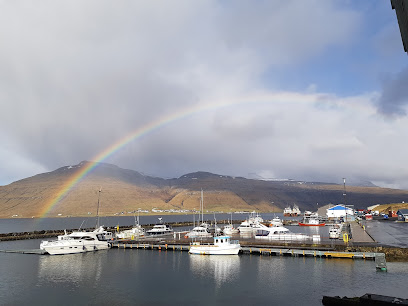
Brimborg
Discover exquisite Faroese cuisine at Brimborg, where local flavors meet breathtaking coastal views in Gøtugjógv.
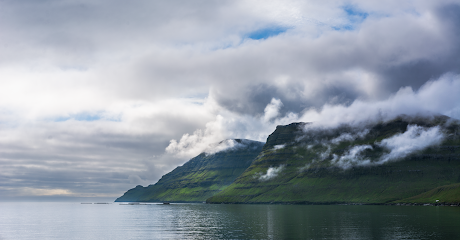
HAMSA
Experience authentic Faroese cuisine at HAMSA in Hoyvík – where local flavors meet modern dining in a cozy atmosphere.
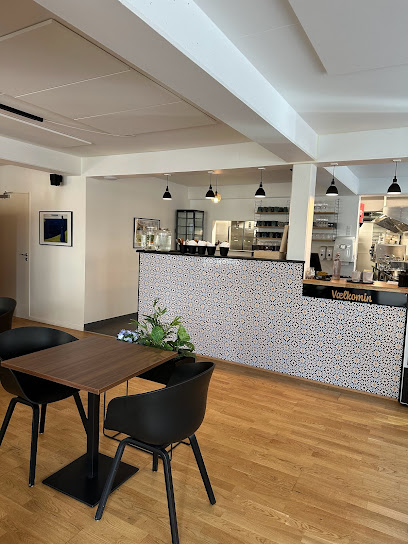
Molly's Pizza
Discover the best pizza in Klaksvík at Molly's Pizza—where fresh ingredients meet local flavors in every slice!
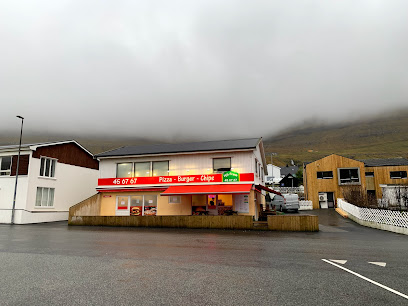
Niđristova
Discover Niđristova in Hvalvík - where traditional Faroese flavors meet breathtaking views in a cozy dining atmosphere.
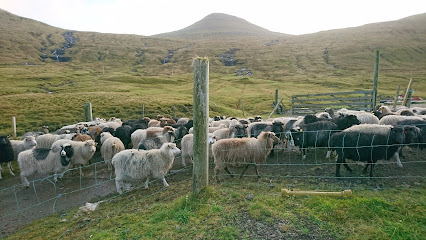
Somwang Thaifood
Experience authentic Thai cuisine at Somwang Thaifood in Strendur - a unique culinary gem amidst the scenic beauty of the Faroe Islands.
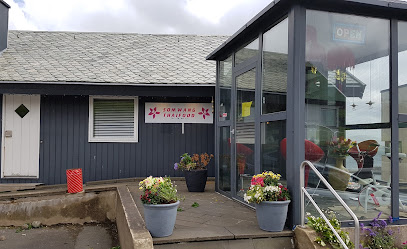
Markets, malls and hidden boutiques
Bónus
Explore the best of Faroese flavors and essentials at Bónus supermarket in Klaksvík, your go-to shopping destination in the Faroe Islands.
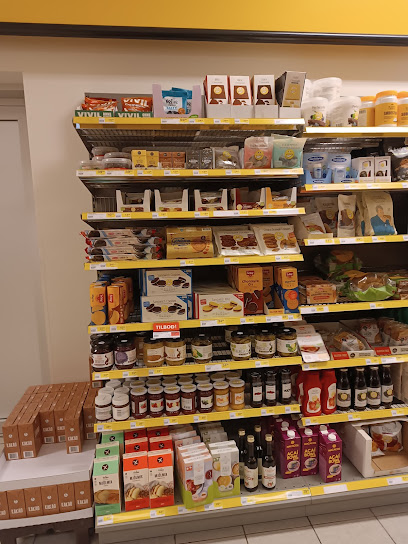
Føroya Keypsamtøka
Discover the flavors of the Faroe Islands at Føroya Keypsamtøka, your go-to supermarket in Klaksvík for local and international delights.
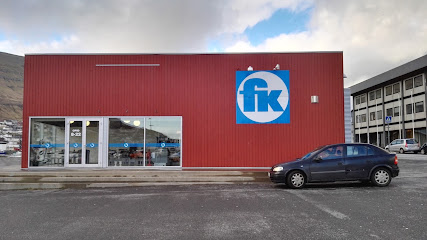
Rúsdrekkasøla Landsins - Klaksvík
Discover the finest selection of local beers, wines, and spirits at Rúsdrekkasøla Landsins in Klaksvík, the heart of Faroe Islands' drink culture.
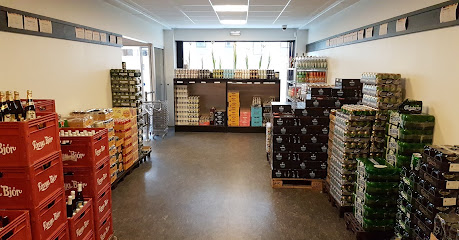
FK fuglafjørður
Explore the authentic flavors of the Faroe Islands at FK Fuglafjørður, a local grocery store brimming with traditional delights.
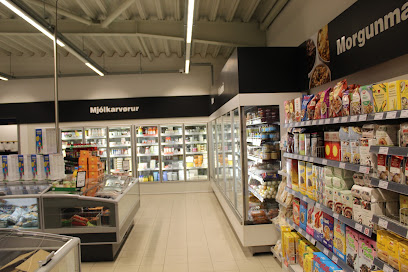
A shop
Discover local flavors and essentials at A Handil, Klaksvík's premier supermarket, perfect for tourists exploring the Faroe Islands.
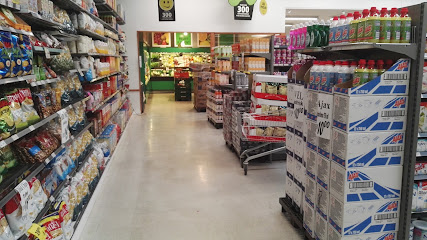
Hjá Vimu
Discover unique Faroese fashion at Hjá Vimu, the premier clothing store in Klaksvík, offering a blend of local and international styles.
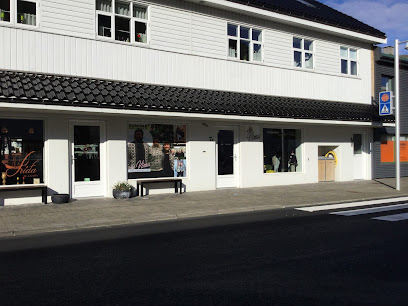
Norðoya Heimavirki
Explore the charm of Faroese craftsmanship at Norðoya Heimavirki, your destination for unique handmade knitwear in Klaksvík.
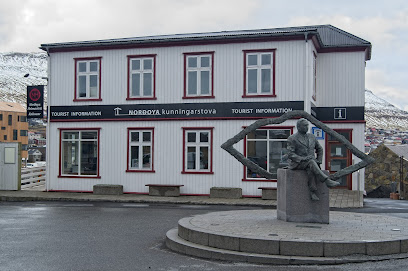
Fjord by Suffía Nón
Explore Fjord by Suffía Nón in Fuglafjørður for unique gifts and local crafts that embody the spirit of the Faroe Islands.
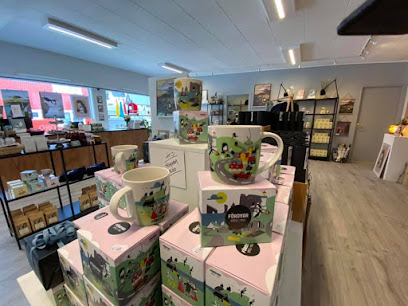
Rit & Rák
Discover the literary charm of Rit & Rák, Tórshavn's premier book store, where locals and visitors connect through the love of reading.
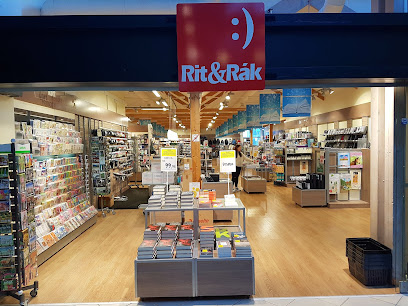
Rokoko
Discover the unique blend of contemporary and traditional fashion at Rokoko, a charming clothing store in Nordragota, Faroe Islands.

Fossabúðin
Experience the authentic flavors of the Faroe Islands at Fossabúðin, a charming grocery store in Norðdepil, perfect for tourists seeking local delicacies.
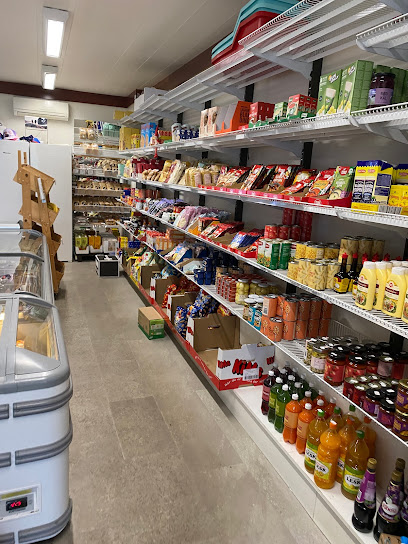
Glimmur
Explore the charm of Glimmur Gift Shop in Tórshavn, where local artistry and unique Faroese souvenirs come together for an unforgettable shopping experience.
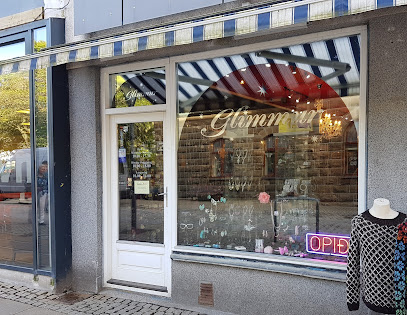
Heygabúðin
Explore Heygabúðin in Klaksvík for a taste of the Faroe Islands with local delicacies and a warm shopping experience in a charming supermarket.

Lávusarhús
Discover unique handmade gifts and local crafts at Lávusarhús in Leirvík, a charming gem of the Faroe Islands.

Cheap
Explore a trendy women's clothing store in Klaksvík, featuring stylish apparel at affordable prices, capturing the spirit of the Faroe Islands.
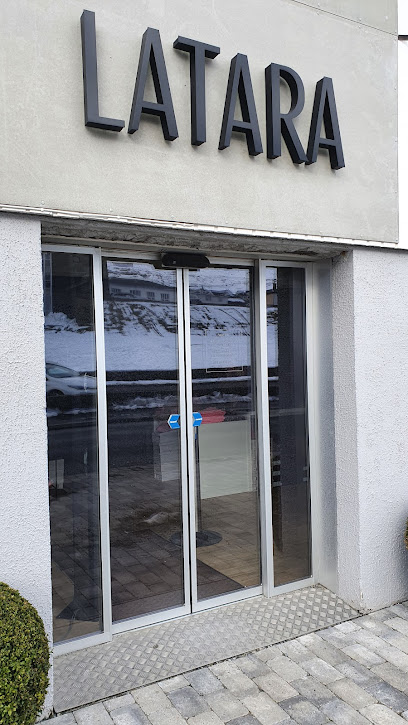
Essential bars & hidden hideouts
Fríða Kaffihús
Discover the essence of Faroese culture at Fríða Kaffihús, a cozy café and restaurant in Klaksvík, perfect for all culinary enthusiasts.
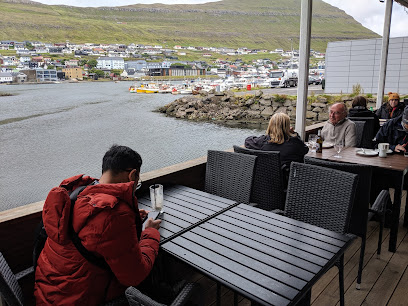
Irish Pub Torshavn
Discover the heart of Ireland in Tórshavn at Irish Pub Torshavn, where good food, drinks, and lively entertainment meet Faroese hospitality.
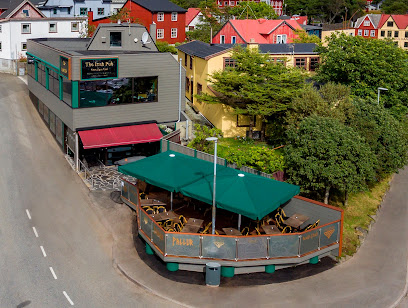
Sirkus Bar
Discover Tórshavn's vibrant nightlife at Sirkus Bar, where local charm meets an energetic atmosphere for an unforgettable experience.
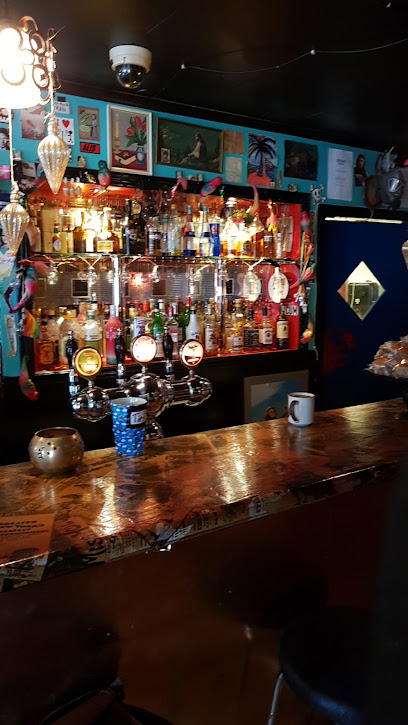
Angus Steakhouse Klaksvík
Experience the best of Faroese cuisine with mouthwatering steaks and local flavors at Angus Steakhouse in Klaksvík.
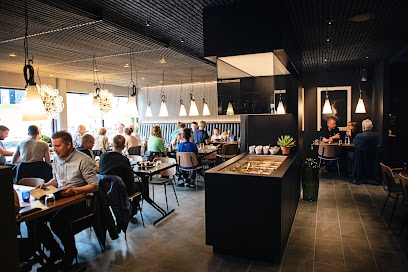
Mikkeller Tórshavn
Mikkeller Tórshavn is a vibrant bar in the heart of the capital, offering an extensive selection of craft beers and delicious light bites in a unique atmosphere.
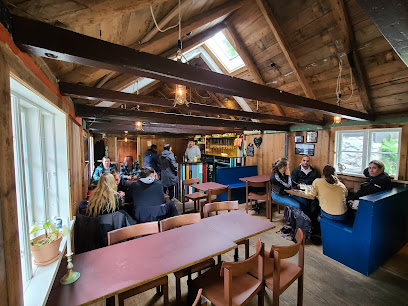
OY Brewing
Experience the essence of the Faroe Islands at OY Brewing, a brewpub offering craft beers and delectable bar food in Tórshavn.
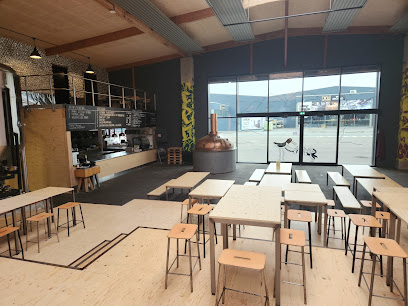
Roykstovan
Experience the vibrant nightlife of Klaksvík at Roykstovan, a cozy bar offering local drinks and a warm atmosphere in the stunning Faroe Islands.
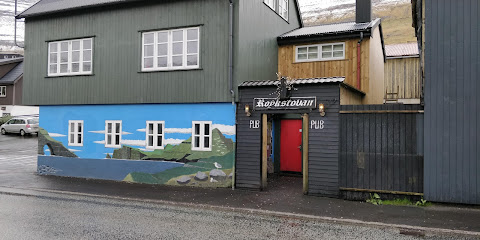
Glitnir
Experience Tórshavn's nightlife at Glitnir, a vibrant bar offering local beers and cocktails in a lively atmosphere.

Blábar
Experience the vibrant nightlife and live music at Blábar, Tórshavn's popular bar, perfect for enjoying a drink and good company.

Tórshøll
Experience the vibrant atmosphere and local flavors at Tórshøll, Tórshavn's premier bar for tourists and locals alike.
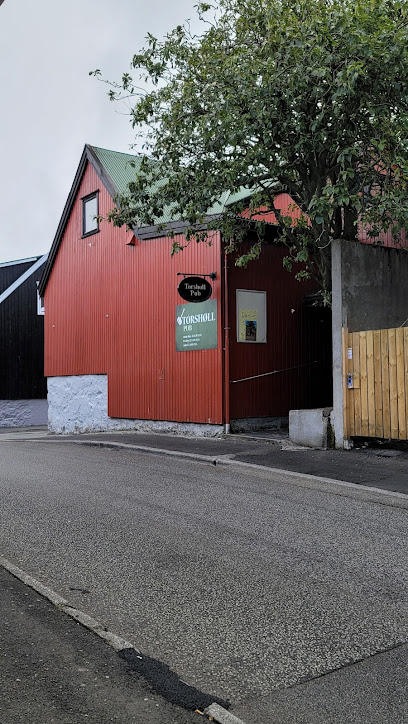
Maverick
Experience the lively atmosphere and local flavors at Maverick, Klaksvík's favorite bar for socializing and relaxation.
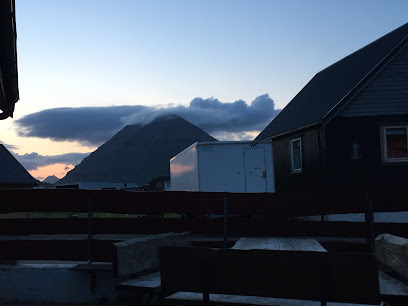
MC Grill
Discover MC Grill in Klaksvík: A unique bar and restaurant experience with local flavors and festive ambiance in the heart of the Faroe Islands.
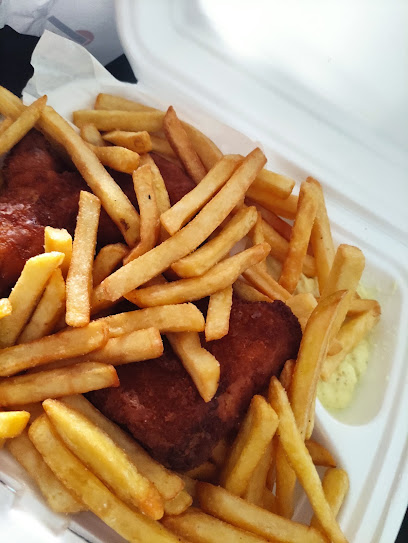
Kjøthandilin v/Òla Langaard
Savor the flavors of the Faroe Islands at Kjøthandilin v/Òla Langaard, the premier takeout restaurant in Klaksvík for authentic local cuisine.

Bjórkovin, the Beer Hub
Explore the vibrant nightlife of Tórshavn at Bjórkovin, the ultimate beer hub offering local and international brews in a cozy atmosphere.
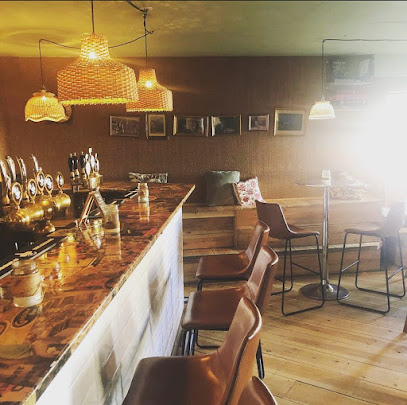
Mungo Klaksvík
Experience the authentic taste of the Faroe Islands at Mungo Klaksvík, a delightful takeout restaurant in the heart of Klaksvík.
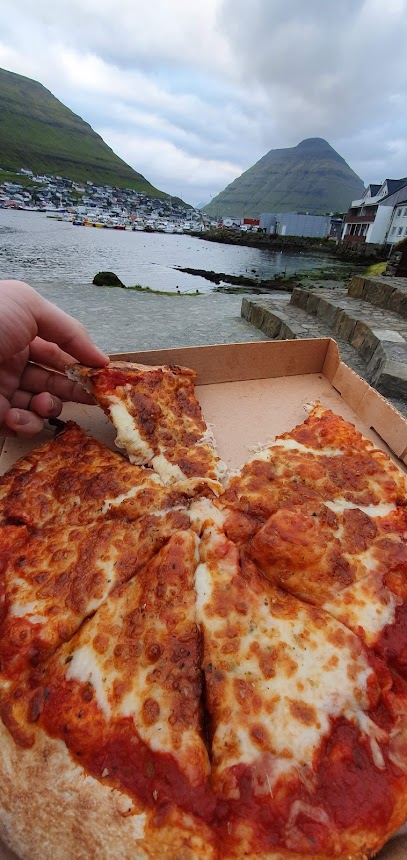
Local Phrases about Kunoy Island
-
- HelloHalló
[hah-loh] - GoodbyeFarvæl
[far-vayl] - YesJa
[yah] - NoNei
[nay] - Please/You're welcomeVænta/Vælkomin
[vahn-tah/vahn-ko-min] - Thank youTakk fyri
[tahk feer-ee] - Excuse me/SorryFyrirgev
[feer-eer-gehv] - How are you?Hvussu hevur tú tað?
[khoos-soo heh-vur too tah] - Fine. And you?Gott. Og tú?
[goht. oh too] - Do you speak English?Talar tú enskt?
[tah-lahr too ehnskt] - I don't understandEg skilji ikki
[eh shil-yee eek-ee]
- HelloHalló
-
- I'd like to see the menu, pleaseEg vil síggja matseðilin, vænta
[eh vil see-ya maht-seh-thil-een, vahn-tah] - I don't eat meatEg eta ikki kjøt
[eh eh-tah eek-ee chyut] - Cheers!Skál!
[skowl] - I would like to pay, pleaseEg vil gjalda, vænta
[eh vil gyal-dah, vahn-tah]
- I'd like to see the menu, pleaseEg vil síggja matseðilin, vænta
-
- Help!Hjálp!
[hyowlp] - Go away!Far burtur!
[far boor-toor] - Call the Police!Ringi Løgregluna!
[reen-yee leu-greh-gloo-nah] - Call a doctor!Ringi ein læknari!
[reen-yee iyn lighk-nah-ree] - I'm lostEg er týndur
[eh air teun-dur] - I'm illEg er sjúk
[eh air shoo-k]
- Help!Hjálp!
-
- I'd like to buy...Eg vil keypa...
[eh vil keh-pah] - I'm just lookingEg er bert at síggja
[eh air behrt at see-ya] - How much is it?Hvat kostar tað?
[khwat koh-star tah] - That's too expensiveTad er ovart dyrt
[tah eh oh-vahrt deert] - Can you lower the price?Kanstu minnka prísin?
[khan-stoo meen-kah pree-sin]
- I'd like to buy...Eg vil keypa...
-
- What time is it?Hvat tíð er tað?
[khwat teed eh tah] - It's one o'clockTað er eitt
[tah eh ayt] - Half past (10)Hálvgildi (10)
[hawl-vyeel-dee (tayn)] - MorningMorgun
[mor-goon] - AfternoonHádegis
[how-deh-gees] - EveningKvøld
[kvool] - YesterdayÍgår
[ee-gohr] - TodayÍ dag
[ee dah] - TomorrowÍ morgin
[ee mor-geen] - 1Eitt
[ayt] - 2Tvø
[tvooh] - 3Trý
[tree] - 4Fýra
[feer-ah] - 5Fimm
[feem] - 6Seks
[seks] - 7Sjey
[shay] - 8Átta
[owt-tah] - 9Ni
[nee] - 10Tíggju
[tee-gyoo]
- What time is it?Hvat tíð er tað?
-
- Where's a/the...?Hvar er ein/tey...?
[kvar air iyn/tey] - What's the address?Hvat er adressan?
[khwat air ah-dress-ahn] - Can you show me (on the map)?Kanstu vísa meg (á kortinum)?
[khan-stoo vee-sah mayg (ow kort-ee-num)] - When's the next (bus)?Nær kemur næsta (buss)?
[nayr keh-moor nyst-ah boos] - A ticket (to ....)Eitt ferðaseðil (til ....)
[ayt fehr-thah-seh-thil teel]
- Where's a/the...?Hvar er ein/tey...?
History of Kunoy Island
-
Kunoy Island, like many of the Faroe Islands, has a history that stretches back to the Viking Age. Archaeological evidence suggests that the island was settled by Norse Vikings around the 9th century. The fertile land and rich fishing grounds made it an attractive location for these early settlers. Ruins of old Viking farms can still be found scattered across the island, offering a glimpse into the lifestyle and challenges faced by these intrepid explorers.
-
During the medieval period, Kunoy Island was part of the Kingdom of Norway and later the Kingdom of Denmark-Norway. The island's inhabitants primarily lived off fishing, farming, and sheep herding. The small village communities were closely-knit and often relied on traditional Norse laws and customs. Kunoy was relatively isolated due to its rugged terrain, which helped preserve its unique cultural practices over the centuries.
-
The Black Death, which swept through Europe in the mid-14th century, had a devastating impact on the Faroe Islands, including Kunoy. Although the exact number of casualties is unknown, entire communities were decimated. The plague led to a significant decline in the population and a long period of recovery and rebuilding. This tragic event left an indelible mark on the island's history and folklore.
-
In the early 18th century, the Faroe Islands, including Kunoy, came under tighter control of the Danish Crown. This period saw the introduction of new laws, trade regulations, and modern infrastructure. The construction of churches, schools, and other public buildings helped to modernize the island. However, the Faroese people, including those on Kunoy, managed to retain much of their distinct cultural identity despite Danish influence.
-
The 20th century brought significant changes to Kunoy Island. The establishment of better transport links, including ferry services, helped reduce its isolation. During World War II, the Faroe Islands were occupied by British forces, which had an impact on the local economy and society. Post-war developments saw improvements in living standards, healthcare, and education. The island's population, however, saw fluctuations due to urban migration trends.
-
Today, Kunoy Island is a blend of traditional Faroese culture and modern influences. The island's two main villages, Kunoy and Haraldssund, are known for their picturesque beauty and warm hospitality. Efforts to preserve the island's natural environment and cultural heritage are evident in local festivals, conservation projects, and the promotion of sustainable tourism. Kunoy remains a testament to the resilience and adaptability of its people throughout history.
Kunoy Island Essentials
-
Kunoy Island is located in the northeastern part of the Faroe Islands. The nearest airport is Vágar Airport, situated on Vágar Island, and from there, you can take a combination of buses and ferries to reach Kunoy. From Vágar Airport, take a bus to the capital, Tórshavn, and then another bus to Klaksvík on Borðoy Island. From Klaksvík, a short ferry ride will take you to Kunoy Island. It is advisable to check the ferry schedule in advance as services may vary depending on the season and weather conditions.
-
Kunoy Island is relatively small, and many of its attractions can be explored on foot. For longer distances, you can use the local bus service that connects Kunoy to other islands. Renting a car is also an option, but keep in mind that the local roads can be narrow and winding. Bicycles are available for rent and can be a great way to explore the scenic beauty of the island at a leisurely pace.
-
The official currency in the Faroe Islands is the Faroese króna (DKK), which is pegged to the Danish krone. Credit cards are widely accepted in most hotels, restaurants, and shops on Kunoy Island. However, it is advisable to carry some cash for smaller establishments and rural areas. ATMs are available in Klaksvík, but it is wise to withdraw sufficient cash before traveling to Kunoy.
-
Kunoy Island is generally a very safe destination for tourists. Crime rates are extremely low, and the local community is welcoming and friendly. Nevertheless, it is always advisable to take standard precautions, such as keeping an eye on your belongings and avoiding isolated areas at night. There are no specific high-crime areas targeting tourists on Kunoy Island.
-
In case of an emergency, dial 112 for immediate assistance. The local police and medical facilities are available in Klaksvík, which is the nearest town with comprehensive services. It is recommended to have travel insurance that covers medical emergencies. For minor health issues, there are pharmacies in Klaksvík where you can purchase over-the-counter medications.
-
Fashion: Do dress in layers, as the weather can be unpredictable. Waterproof clothing and sturdy footwear are recommended. Avoid wearing overly casual or revealing clothing in public spaces. Religion: Do respect local customs and traditions. When visiting churches, dress modestly and remain quiet. Public Transport: Do be punctual, as buses and ferries run on strict schedules. Don't eat or drink on public transport. Greetings: Do greet people with a friendly 'Hallo' or 'Góðan dag'. A handshake is also common. Eating & Drinking: Do try local Faroese dishes and accept food offerings graciously. Don't waste food, as it is considered disrespectful.
-
To experience Kunoy Island like a local, take time to explore the natural beauty of the island, including its hiking trails and scenic viewpoints. Engage with the locals, who are often eager to share stories about their way of life and the island's history. Visit the small village of Kunoy, where you can experience traditional Faroese architecture and culture. Don't miss the opportunity to try local seafood, which is a staple of the Faroese diet.
Trending Landmarks in Kunoy Island
-
Kirkjubømúrurin
-
Múlafossur Waterfall
-
Gjógv Natural Harbour
-
Fossá
-
The Nordic House
-
Skansin
-
The Seal Woman (Kópakonan)
-
Trælanípa
-
The National Gallery of The Faroe Islands
-
Tjóðsavnið (Faroe Islands National Museum)
-
Kallur Lighthouse
-
Slave Cliff (Lake Above the Ocean)
-
Giljanes Hostel & Campsite
-
Klakkur
-
Christianskirkjan
Nearby Cities to Kunoy Island
-
Things To Do in Gøta
-
Things To Do in Hvalvík
-
Things To Do in Strendur
-
Things To Do in Runavík
-
Things To Do in Kvívík
-
Things To Do in Vestmanna
-
Things To Do in Tórshavn
-
Things To Do in Argir
-
Things To Do in Sandavágur
-
Things To Do in Nólsoy
-
Things To Do in Miðvágur
-
Things To Do in Sorvagur
-
Things To Do in Tvøroyri
-
Things To Do in Vágur
-
Things To Do in Seydisfjordur









